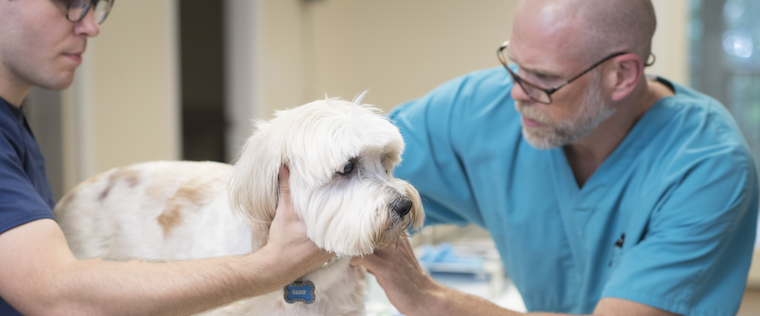It is important to help your pets maintain a healthy weight for all the same reasons it is important for people to do so. Being overweight or obese puts your dog or cat at higher risk for certain types of disease, including diabetes. It also creates additional, damaging strain on joints and can exacerbate the effects of arthritis. And that’s just for starters.
The first step in managing their weight is knowing whether your dog or cat is overweight in the first place. Your vet will help you determine their ideal weight. But here are a few things you should look for:
- If you can’t easily feel the backbone and ribs, your dog is likely overweight.
- When you look from the side, a dog’s stomach should be raised. A sagging stomach is a good sign of extra pounds. The same applies for a sagging stomach on a cat.
- When you look down at your dog from above, you should see a "waist," or inward curves, between the back of his rib cage and his hips.
But before you make any changes to their diet, make an appointment for a physical examination with your vet to confirm that your pet is indeed overweight, and, most importantly, if there is a problem other than or in addition to their diet. Sagging bellies and obesity can be caused by metabolic issues as well.
Once your vet confirms your pet is overweight and makes a diet recommendation, here are three ways you can help them lose pounds and maintain a healthier weight:
- Adjust their type of food. Many of the cheaper pet foods are very high in carbs and low in protein and healthy fat. These types of foods are less filling and nutritious, which makes your pet want to eat more, further increasing their caloric intake. Your vet will recommend the best type of food for your animal.
- Reduce their amount of food. Most people don’t pay much attention to proper serving sizes when it comes to feeding their pets. But it is important to figure out the proper amount of food to feed them. Avoid leaving food out all day — pets generally cannot and will not regulate how much they eat. For this reason, those self-serve dog feeders are a bad idea.
- Cut back on treats and snacks. We’re not against treats. But, again, understanding what those treats actually are made out of and knowing how much to give is essential. In general, treats and snacks shouldn’t make up more than about 10 percent of their daily calories. Unfortunately, most store-bought, pre-packaged treats pack a major caloric punch, and it can be easy to lose track of how many treats you are giving your pet every day. Try moving to vegetables and fruits. Most dogs love carrots, green beans, apple slices, and other fruits and veggies.
As always, contact us if you have questions and make sure to ask about your pet’s ideal weight at every checkup.



